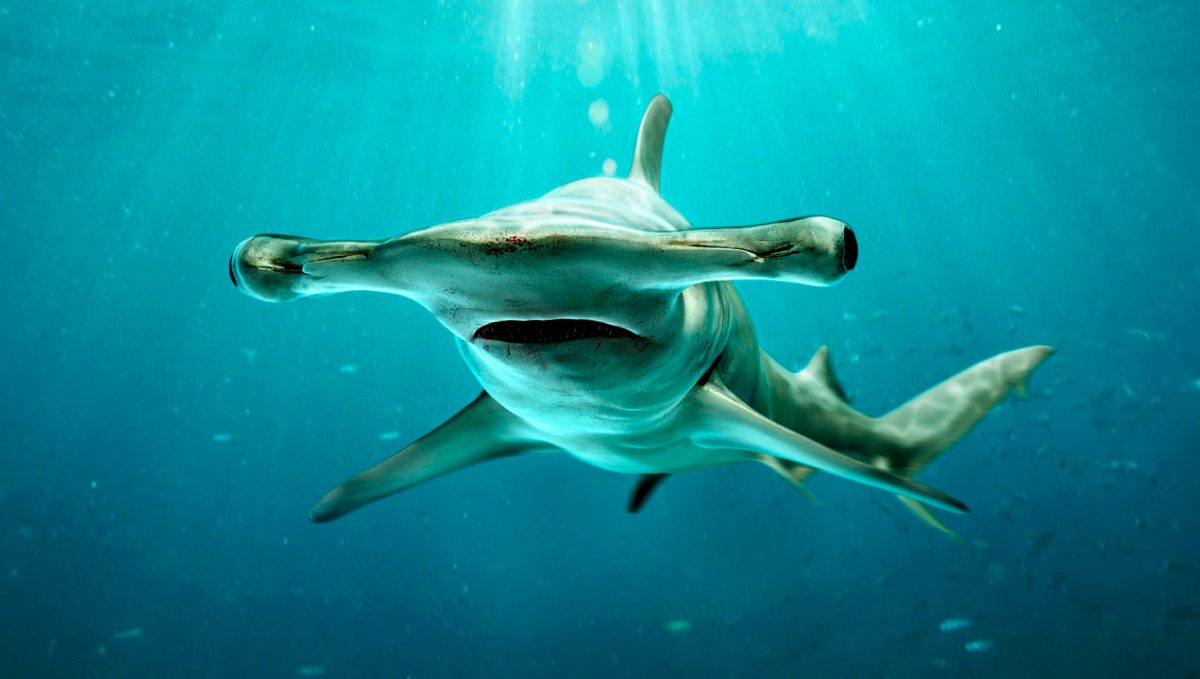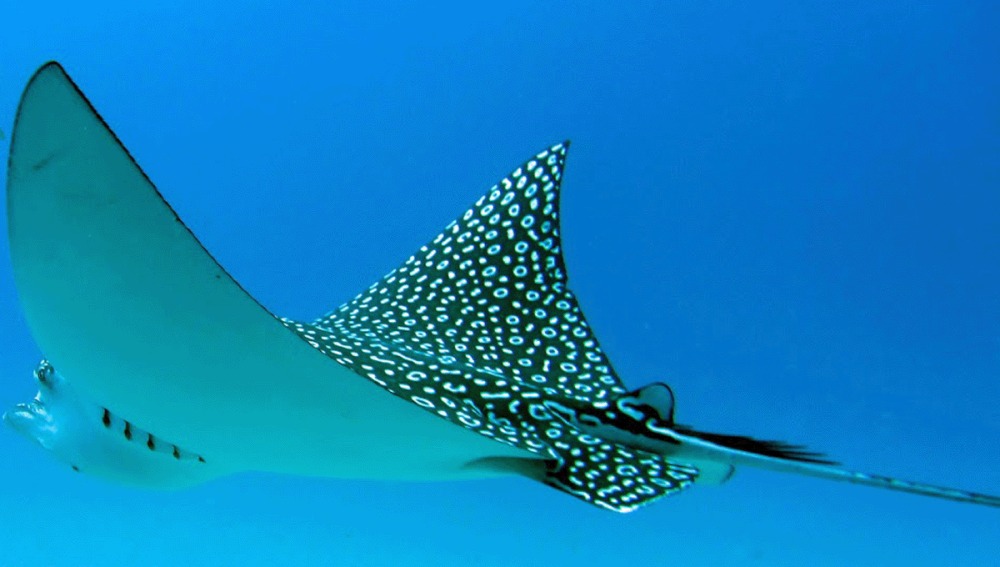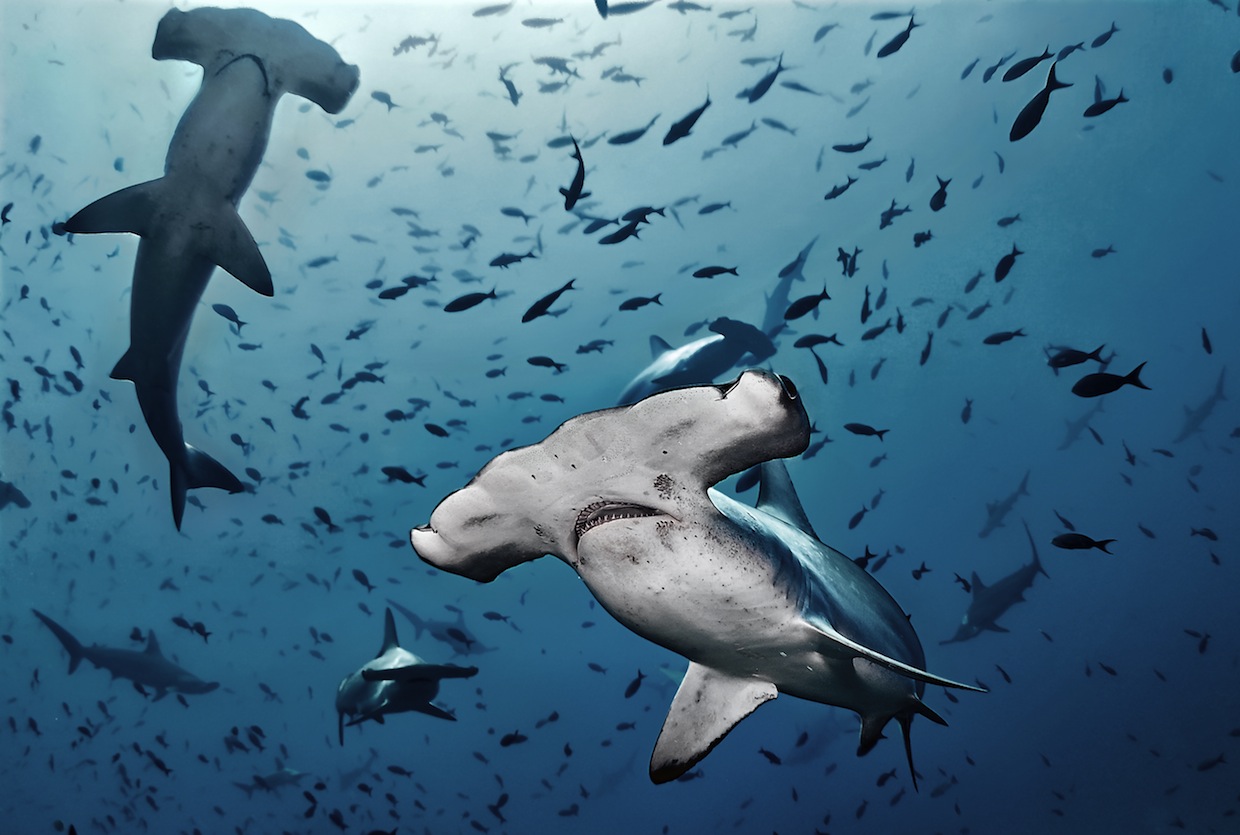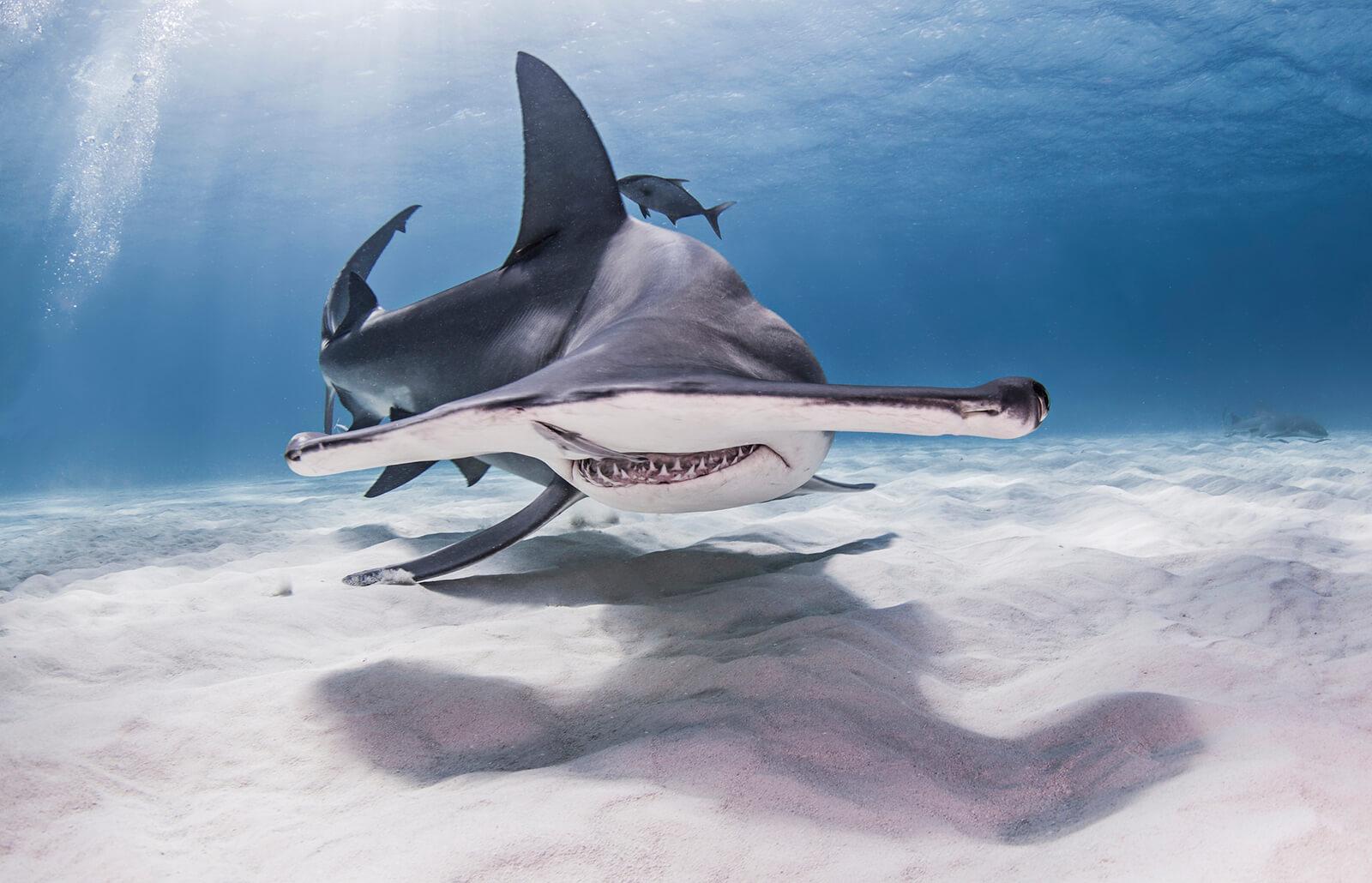El hammerhead shark, is differentiated in the marine kingdom, thanks to its particular flattened T-shaped head, whose location of eyes, according to the researchers, provide a 360 ° vision. It can be up to 6 meters long and weigh almost 600 kilograms. Find out everything you need to know here.

Hammerhead shark
El hammerhead shark, which is also identified as "horned", with the scientific name "Sphyrnidae", is a member of the "Elasmobranchii" family, whose order is "Carcharhiniformes". It stands out for having a peculiar flattened T-shaped head, having at the ends of it, both its nostrils and eyes. With what reaches to have a privileged 360 ° vision.
It is part of the viviparous animals that inhabit the warm seas of Planet Earth. Being able to detect all the magnetic fields, which are caused after the movements of any nearby prey. However, as it has a small mouth, its diet is based on animals that are not so bulky, such as fish, crustaceans, rays, octopus, among others.
It is usual to obtain specimens with lengths that range from the range close to one meter, up to approximately 6 meters. While the weight of these is found according to size, between 3 kilograms and normally almost 600 kilograms.
On the other hand, the International Union for the Conservation of Nature has included the species of "Giant Hammerhead Shark" in its "Red List", under the category of "Critically Endangered" of extinction. Being the main threat, the commercialization of its fins, meat and liver, to be used in a variety of edible elements.
Hammerhead shark habitat
El hammerhead shark Its habitat is the warm waters belonging to the tropical and subtropical zones of the globe. Which makes it one of the most prominent predators in these regions. However, during the summer season, it migrates towards high latitudes.
Hammerhead Shark Characteristics
La hammerhead shark information most relevant, that highlights it, makes it extraordinary and is truly:
- It has a T-shaped head, so its eyes, along with its nostrils, are located at the ends of it.
- His vision reaches 360 °, which facilitates his agility and predatory dexterity.
- It breathes through gills, having its pectoral fins behind them.
- It is located in the warm water seas of the globe.
- When submerged, it reaches up to 200 meters deep, meanwhile it stays below 20 meters from the surface.
- Their diet is mainly based on smaller fish, rays, crabs, octopus and squid.
- During the day, it develops in groups of up to 100 individuals, while at night it remains solitary.
- It can measure a length of up to 6 meters.
- It reproduces annually, which means that it is only once, every 12 months.
- It develops its reproductive maturity at eight years of age.
- It is a viviparous animal and the female has a pregnancy that ranges between 8 and 12 months. Bearing 12 to 15 offspring, length below 50 centimeters each.
- Its weight, according to its size, ranges between 3 and almost 600 kilograms.
- It has sensory organs that make it easier for it to capture electrical fields, product of the movements of prey around it.
Hammerhead Shark Feeding
El hammerhead shark, stands out for having a prominent feeding of:
- Stripes (preferred)
- smaller fish
- crabs
- Prawns
- Prawns
- Squid
- octopuses
- Other species of sharks
Hammerhead shark reproduction
El hammerhead shark It is a viviparous animal, which means that live young are born from the female. Their mating takes place once a year after reaching sexual maturity. The mechanism carried out by the male is to bite the female, as many times as necessary, until she allows him to mate. Culminating with sperm penetration.
Gestation
The gestation period ranges between 8 and 12 months. Although the female, she does not have the placenta that fulfills the need for nutrition, respiration and excretion, as do other mammalian species. They have in their effect a uterus and in the internal part of this is where development takes place, together with the growth of the embryos. Which are kept in an individual membrane.
During the growth and development of the embryos, they receive their nourishment by subtracting nutrients from the yolk sac in which they are found. If it is the case that these nutrients run out, the sac becomes a placental yolk sac, through which they then obtain food, until the full gestation period is completed and they are born.
Nacimiento
The number of common pups to be born ranges between 12 and 15, with a length below 50 centimeters each. During their first years of life, these hatchlings stay close to shore. Likewise, in wetlands, which are lands in which there are surface waters, or underground, of little or shallow depth.
They are also located in this period of growth, near the mouth of the rivers. Until, having reached 4 or even 5 years of life, they move to the ocean, that is, to the open sea where they arrive to complete their life stage in which later, adulthood or reproductive maturity and mating come.
post mating
After mating, the already fertilized female returns to the coast, which is the place where she will have the young, after completing the gestation period. Meanwhile, in this place, the fish belonging to the habitat, such as the angel fish and the butterfly fish, carry out a kind of "cleaning" that consists of removing the parasites that it may have. Finally repeating the cycle that begins in the reproduction of the hammerhead shark.
Hammerhead Shark Behavior
El hammerhead shark, is an animal that swims in groups during the day, reaching up to 100 members, however, at night, it is usually solitary.
Regarding human beings, it does not represent a threat as such, although there are records of isolated attacks, in which the motive does not visibly come from violence or aggressiveness. But on the contrary, because of the peculiar shape of his head, which he has come to mistreat indirectly. Besides, it is characterized by being one of the animals that migrate, during the summer season. Having as destination, the high latitudes.
Hammerhead shark hunting method
The hunt for its prey is carried out by beginning to keep swimming near the seabed of the ocean. In this way it is easier for him to reach the stalking of them, which appear at any time.
When he has already captured the electrical fields of the movement of the prey and apart from it he has sighted it, he subdues it by taking it into captivity, until finally it makes use of its peculiar flattened head in the shape of a T. Which it uses as its means of attack to hit it repeatedly. . In this way, the hammerhead shark He manages to exhaust it, to gradually tear it apart until the feast is complete.




